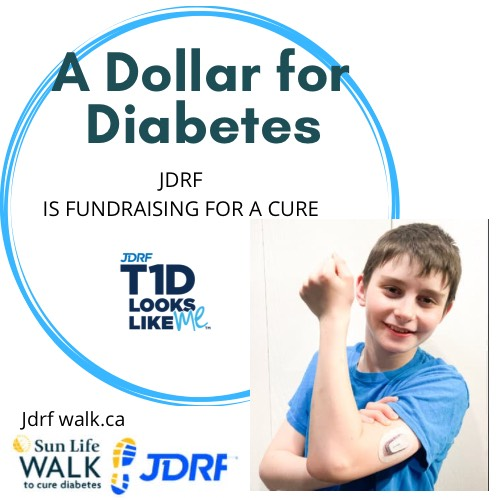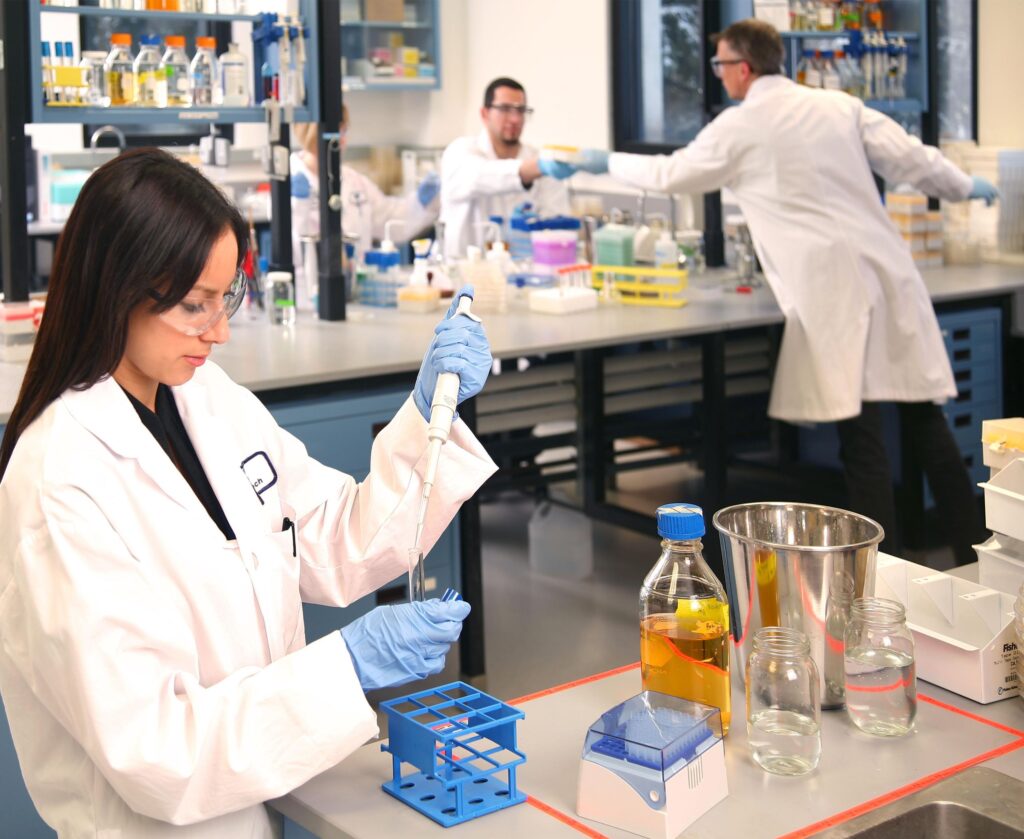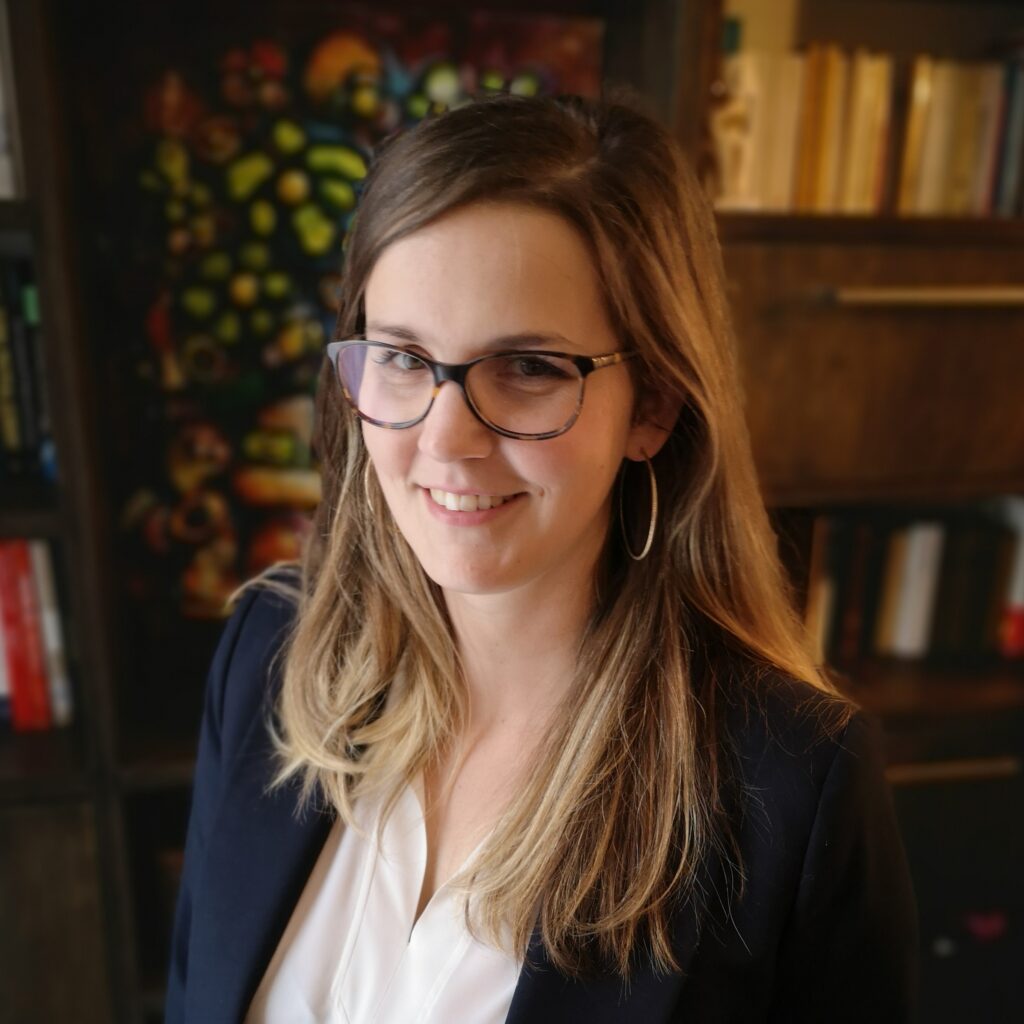This June, Canadians from coast to coast will be coming together to unite, raise funds and help accelerate the pace of type 1 diabetes (T1D) research as part of the 2021 Sun Life Walk to Cure Diabetes for JDRF. This year is a big one…we’re commemorating 100 years since the discovery of the life-changing drug known as insulin – discovered right here in Canada. Because of that, we’re challenging our participants to ‘think 100.’ Whether it’s 100KM of walking, running, bottle returns, sit ups…the possibilities are endless!
We wanted to feature some of our favourite 100 challenges that we’ve seen thus far. Read on to see what our amazing participants are doing to ‘think 100!’
100KM for T1D – Lindsay AND Cole

Dynamic-duo, Lindsay and her partner Cole – who has been walking for 21 years – , are full swing ahead with their challenge. This year, they thought they’d channel their competitive spirit and take it up a notch with their 100 challenge by running 100km by June 13th!
“It’s been a fun challenge, and everyone has been so supportive of my progress. Cole is training for a Half Ironman this summer, so he’s been a great motivator and running partner!”
Team Gunderson will be breaking a sweat until event day, celebrating their huge ‘100’ accomplishment on event day.
“Team Gunderson will be at the Walk – rain or shine, every step of the way!”
100 Vaccines for 100 years – Danny and family

This will be Danny and his family’s 19th year Walking with JDRF. This is also the 20th year since his eldest daughter, Aviva, was diagnosed with T1D.
“My goal, to go along with the 100th anniversary theme, will be to administer 100 COVID vaccine doses at a mobile vaccination site each month, until we don’t have to do this anymore. I will do this in addition to caring for my patients in my family medicine office since vaccinating is a another way that I can help to protect their health and the well being of the community.”
Like all parents, there is nothing Danny and his wife Debbie won’t do to help find a cure for T1D.
“We are honouring the 100th anniversary of the discovery of insulin.”
100 letters to the community – Tilly

In an effort to give back to the community, Tilly’s 100 challenge involves writing 100 letters to residents of long-term care homes.
“The idea came about from a family brainstorming discussion. Tilly’s brother suggested writing letters and she thought it was a great idea!”says Jo – Tilly’s mom.
Tilly hopes to bring smiles to the faces of those in long term care with her words, adding that especially during COVID, people are missing their loved ones, and don’t have the ability to have face-to-face conversations much anymore.
“It’s a way of giving back to the community, as they’ve always been so supportive to her lived experience with T1D, and her fundraising.”
A dollar for diabetes research (Dayden and Sylvia)

Dayden was diagnosed with T1D when he was in second grade. It was a life-changing event for him and his family, but their school community were quick to jump in and support the Aspins.
“My first conversation with another type 1 diabetic happened to be my son’s teacher. The school had been so supportive of him and his needs, so we’re challenging the students to each bring in a dollar for T1D research.”
Mom, Sylvia, says the school has been overwhelmingly supportive of his challenge.
Not only are we raising dollars as part of the challenge, but we’re removing stigma, raising awareness and promoting the importance of what JDRF does.”
We love to hear these stories from our dedicated T1D families, and are so grateful for the overwhelming participation in the 2021 Walk, and our 100 challenge!
Have you signed up for the Walk yet? Join Canadians from coast to coast and start your 100 challenge today. We hope to see you on June 13th!





